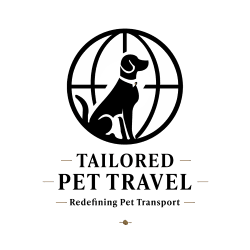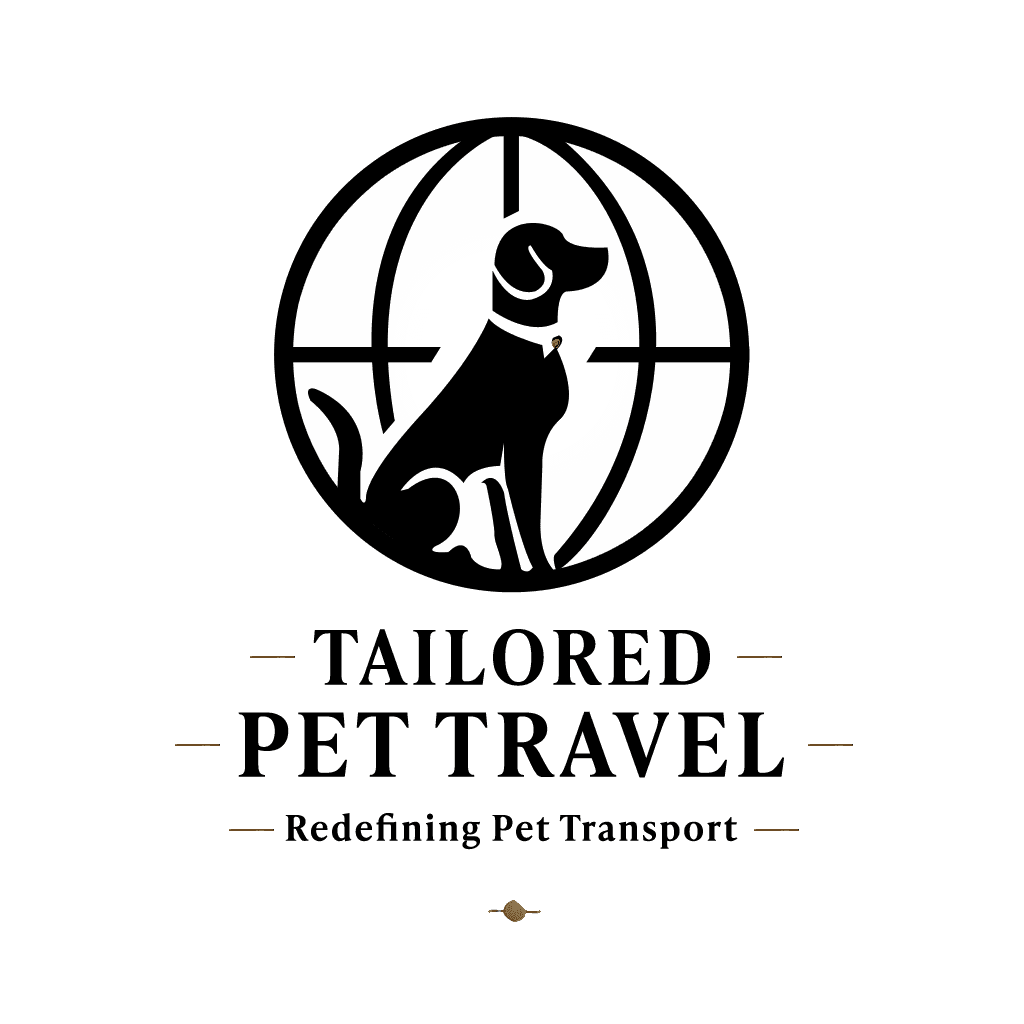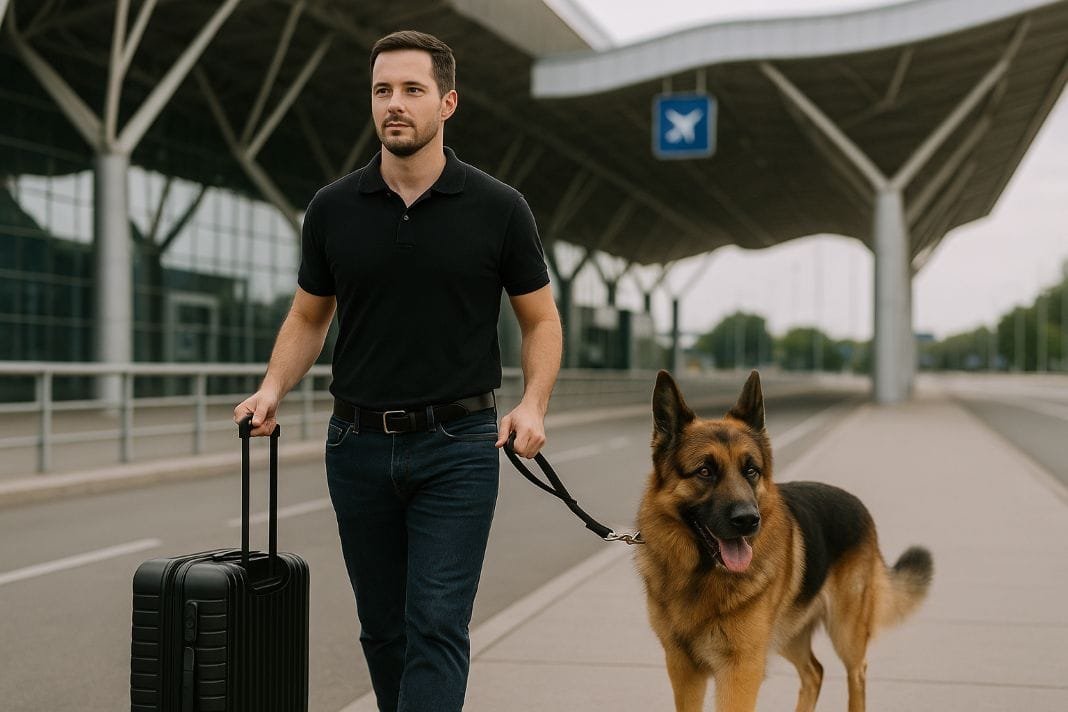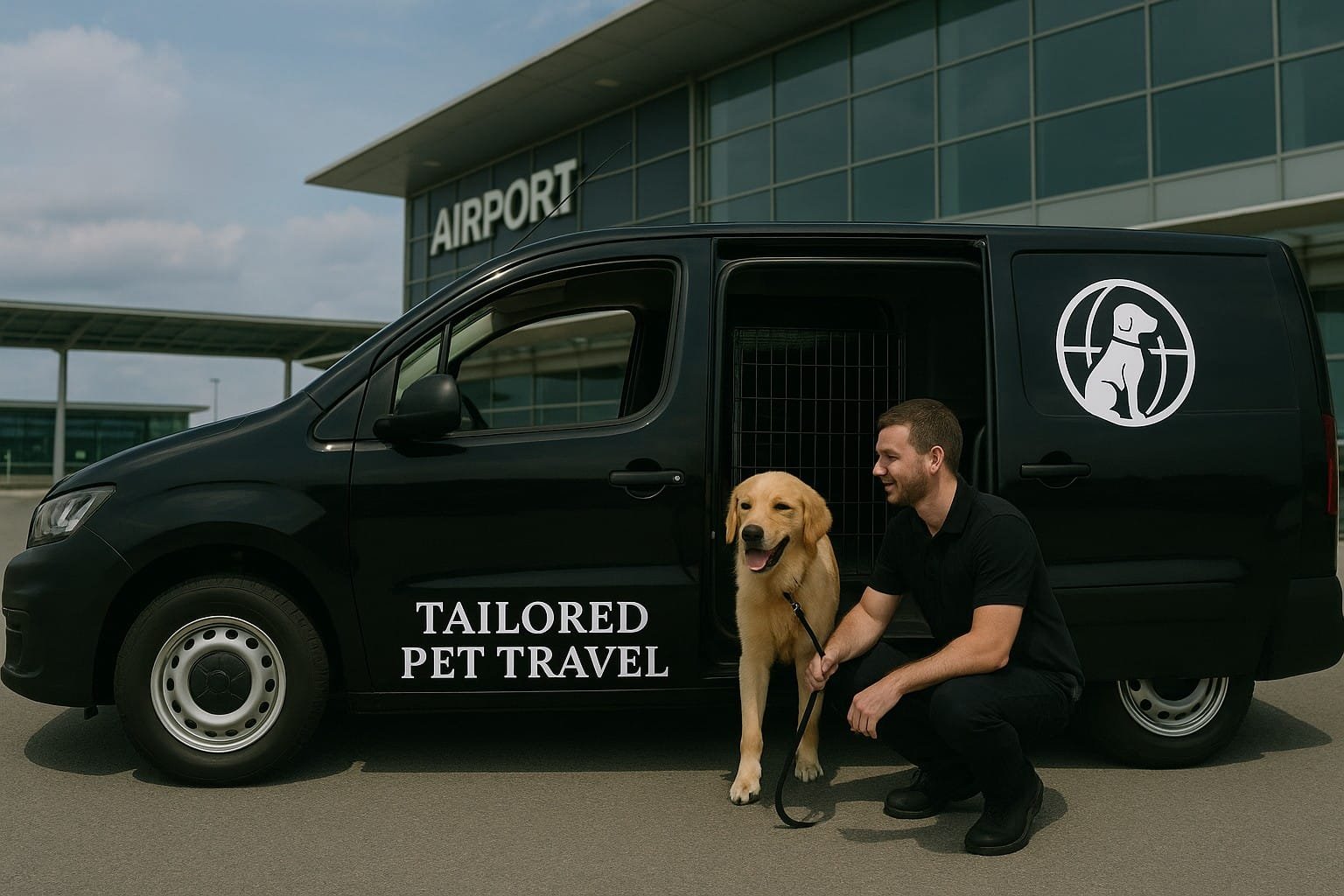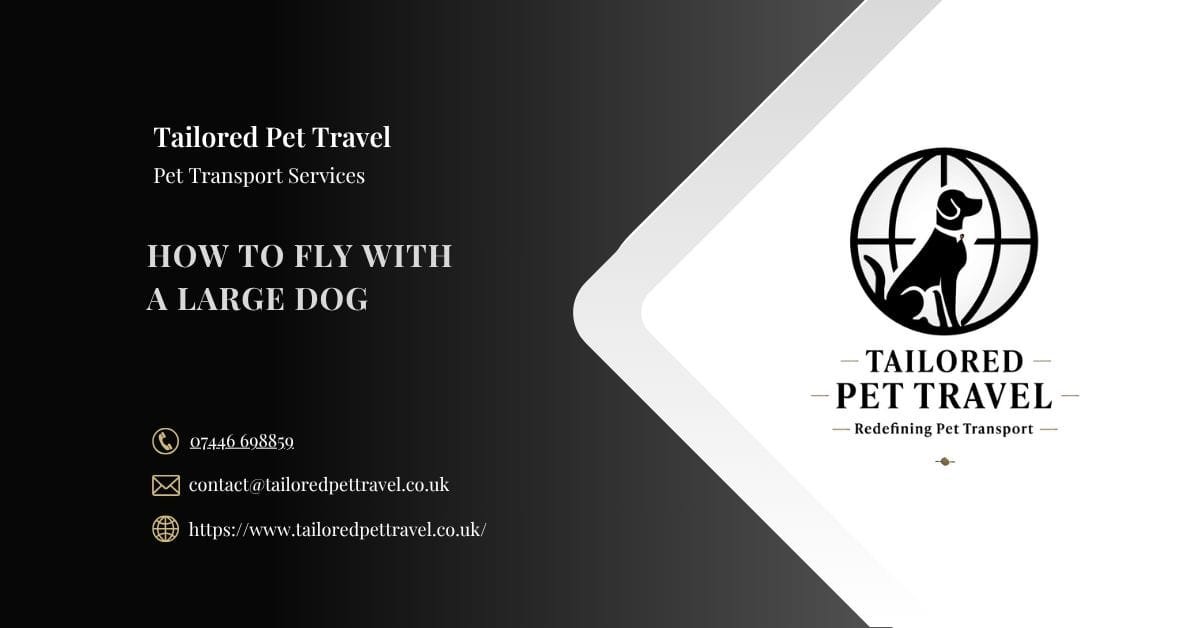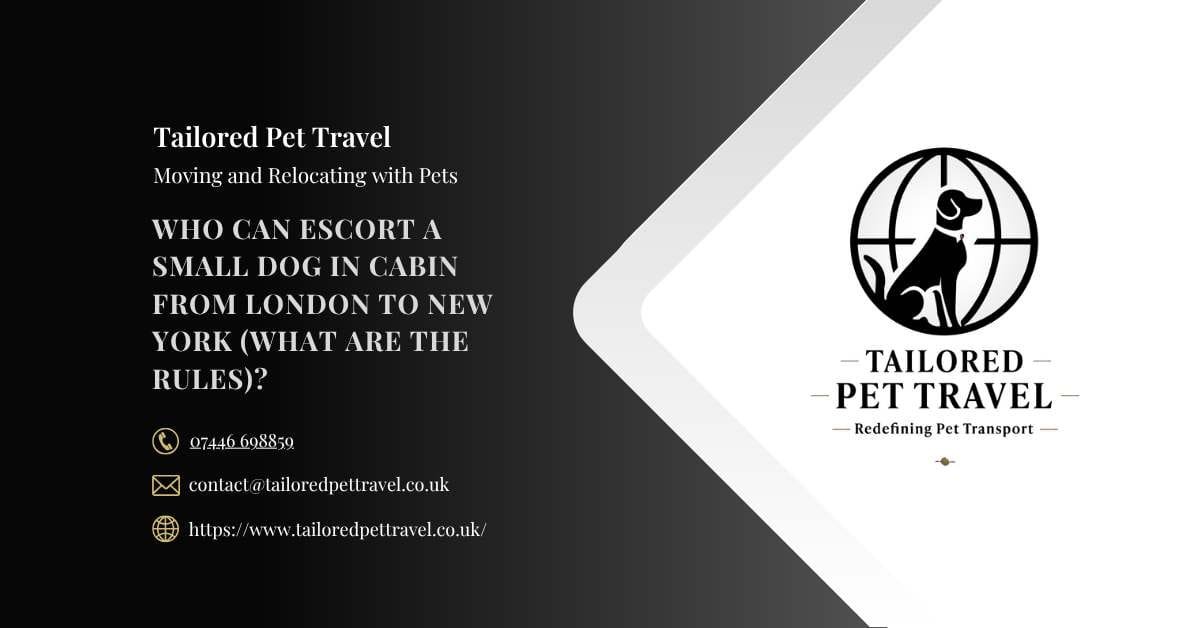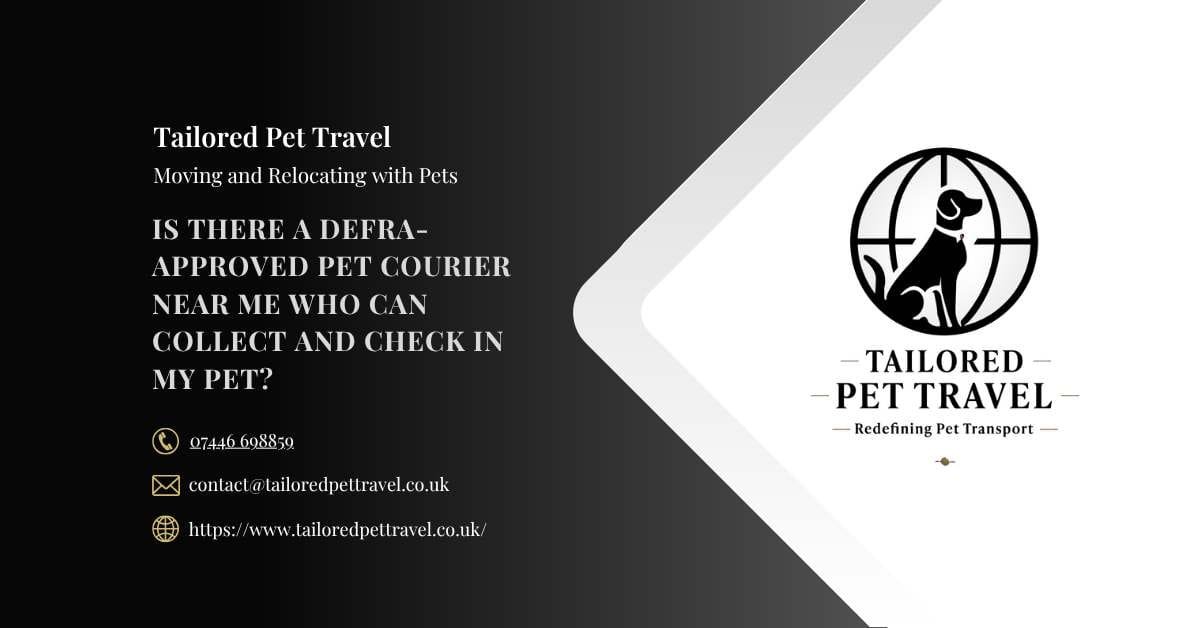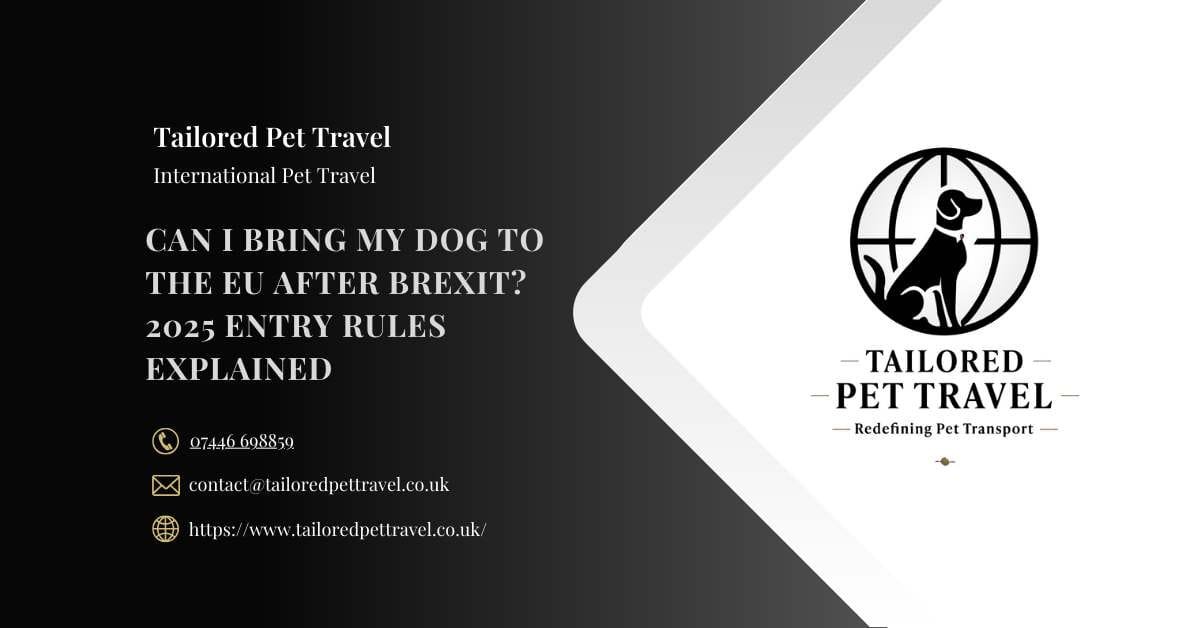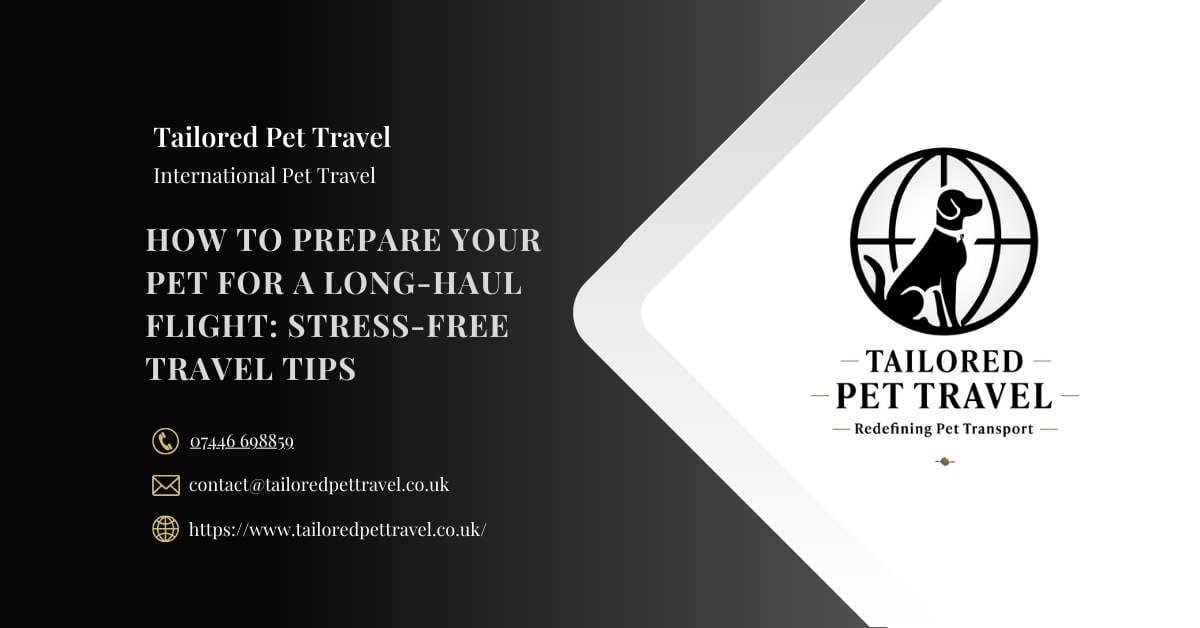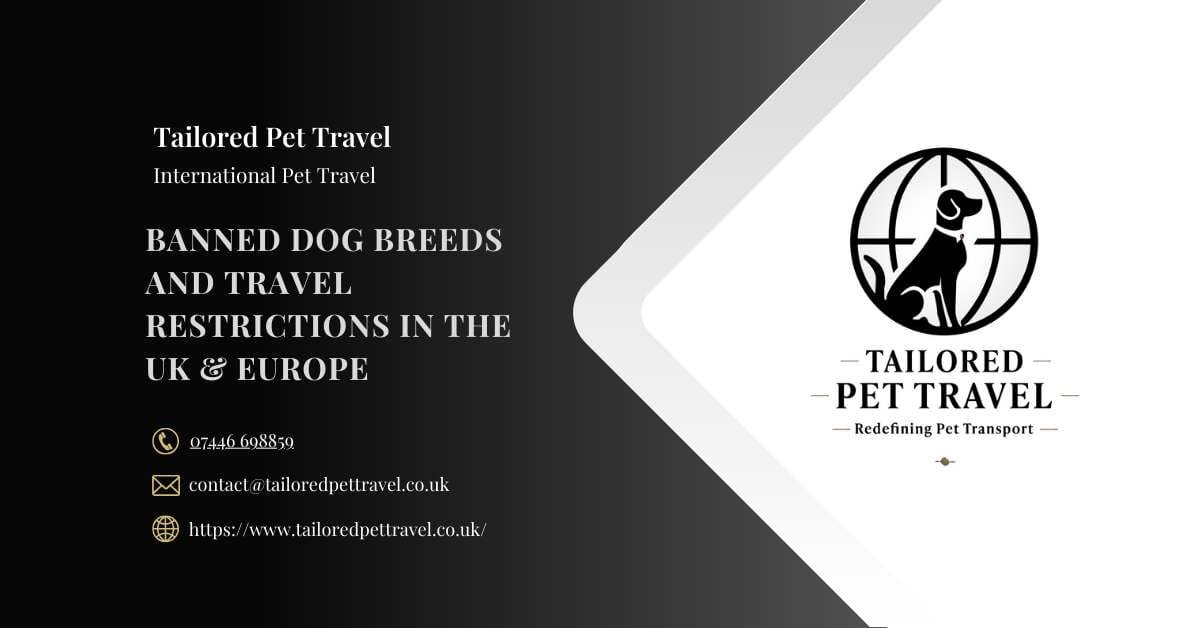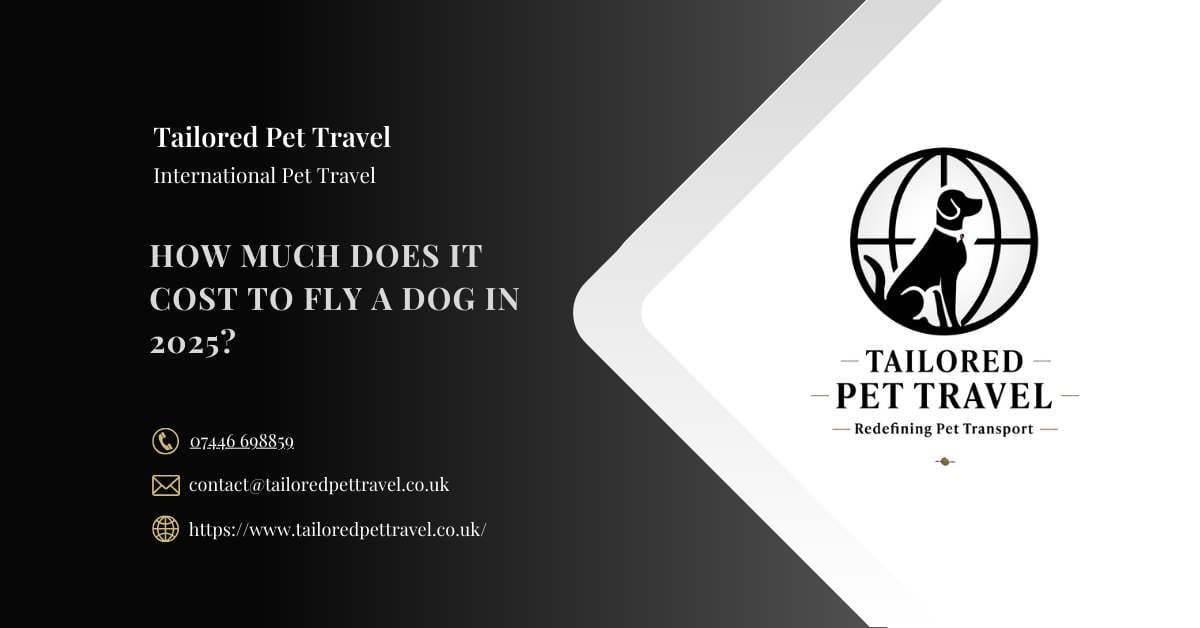How can you fly with a large dog safely and legally in the UK?
You can fly with a large dog in the UK by making sure you’re using an airline that accepts them, preparing the right travel crate, getting up-to-date health certificates from your vet, and understanding whether your dog will need to travel in the cabin or cargo area. You’ll also need to think about comfort, temperature, and how your dog reacts to travel. Some pet-friendly airlines offer in-cabin options for larger breeds, while most traditional carriers require dogs to fly in cargo with specific rules and crate standards.
Here's What We Have Covered In This Article
Travel Options for Large Dogs on Planes
Can large dogs fly in the cabin?
On standard UK airlines, large dogs usually cannot fly in the cabin unless they are registered assistance dogs. However, there are some private and semi-private flight services where dogs of all sizes can travel beside their owner without needing to be crated. These include names like BARK Air, JSX, K9 Jets and Tradewind Aviation. These services are more expensive but are designed with pets in mind, and they give owners peace of mind that their dogs are close and comfortable.
What about flying large dogs in cargo?
Most people flying with large dogs from the UK use traditional commercial airlines like British Airways or Lufthansa. These airlines only allow large dogs in the cargo hold, which is temperature-controlled and pressurised. This part of the plane is specifically designed to carry animals. Your dog will need to be in a travel crate that meets international standards, and you’ll have to follow the airline’s procedures closely. Always check individual airline policies, as rules and costs can vary.
Can you buy your dog their own seat?
On commercial flights, no. UK and EU rules don’t allow dogs to sit in passenger seats unless they’re recognised assistance dogs. Some private airlines do allow this if you purchase an extra seat, but it depends on the provider. If this is something you’re considering, it’s worth checking the latest rules directly with the airline.
Getting Everything Ready Before You Travel
Vet checks and documents you’ll need
Before you book, take your dog to the vet. For most international travel, dogs need an Animal Health Certificate issued within 10 days of travel. They’ll also need to be microchipped and have an up-to-date rabies vaccination. Keep a copy of all vaccination records and health paperwork with you, and double-check if your destination has any special entry rules for pets.
Help your dog get used to their crate
If your dog isn’t already crate-trained, you’ll want to start as early as possible. Let them explore it at home with the door open and reward them when they go inside. Add their blanket or a favourite toy so it feels familiar. The crate should feel like a safe space, not a punishment.
Get them comfortable with the idea of travel
Dogs can get nervous around loud noises and new places. Playing recordings of airport sounds or taking short car rides in the crate can help get them used to the motion and noise they might experience on a flight. The more relaxed they are on the day, the easier the journey will be for both of you.
Book a Safe Flight for Your Dog Today
Need help booking flights for your large dog? Let our team handle crate fitting, airline compliance, and travel logistics.
Choosing the Right Crate for Your Dog
What size crate do you need?
The crate must follow IATA (International Air Transport Association) guidelines. Your dog needs to be able to stand up, turn around and lie down without touching the sides. Crates must have strong locks, be made from solid material, have ventilation on all sides, and include food and water bowls attached to the inside of the door.
Labelling and safety checks
The crate should have clear labels with your name, contact number and destination. Stickers saying “Live Animal” are also required. Some owners attach a recent photo of their dog and feeding instructions just in case the flight is delayed.
Making it comfortable inside
Line the bottom of the crate with absorbent pads. Add a blanket that smells like home, this can help your dog feel more at ease. Avoid hard toys or items that could roll around or become a hazard. Water bowls must be attached securely and filled with ice, which melts slowly during the flight.
Pro Tip:Always freeze water in your dog’s crate bowl the night before travel. It melts slowly during the flight, keeping your dog hydrated without mess.
What to Do on Flight Day
Timing your dog’s food and exercise
Feed your dog at least six hours before the flight to avoid motion sickness. Give them a good walk so they have a chance to go to the toilet and burn off a bit of energy. Offer water before check-in and make sure their crate water bowl is topped up with ice.
What to pack for your dog
Bring the following with you:
-
Printed copies of all documents
-
Spare lead and collar
-
Absorbent pads
-
A familiar blanket or toy
-
Medications if needed
-
A recent photo of your dog
Getting through the airport
Arrive early – at least three hours before the flight. If your dog is flying in cargo, you’ll likely need to drop them off at a separate part of the airport. It’s a good idea to call ahead or check the airport map to find out where this is. Ask airline staff if you’re not sure – they’re used to helping pet owners.
Prefer Not to Fly Your Dog? We Offer Ground Transport
Our climate-controlled pet vans are ideal for large dogs who prefer the road. Nationwide service with full care included.
Should You Sedate Your Dog Before Flying?
Is it safe to give your dog medication?
Generally, no. Most vets recommend against sedating pets before flights because it can affect their breathing and how they handle changes in pressure. In some cases, sedated dogs have more difficulty regulating their body temperature, which can be dangerous. Airlines may also refuse to carry sedated dogs.
What are the safer alternatives?
Instead of medication, you can try calming sprays, herbal remedies, or a compression vest that helps dogs feel secure. Speak to your vet about the best options. Dogs that have been trained to feel relaxed in their crates usually manage much better in the air.
Following Airline and Government Rules
Safety rules on UK and European flights
Airlines follow guidelines to make sure dogs are safe during travel. They won’t accept pets if it’s too hot or too cold along the route. Some airlines also have blackout dates when pet travel isn’t allowed, like during peak summer or winter seasons. Always check your route before booking.
What about travelling to places like the US or Australia?
If you’re heading outside Europe, you’ll need to follow that country’s import rules. For the US, you must meet current CDC guidelines. This includes rabies vaccinations, microchipping and sometimes arriving at specific airports. Countries like Australia and Japan require months of preparation, including special blood tests and possible quarantine. Always plan well in advance.
Will my dog need to quarantine?
It depends on where you’re going. Many destinations now allow pets to enter without quarantine if all documents and vaccines are in order. Others still require a holding period. Ask your vet or a pet travel agent to help you check.
Pro Tip: Get your dog used to their travel crate at least two weeks before departure. Familiarity makes the flight less stressful for both of you.
What’s the Difference Between an Assistance Dog and an Emotional Support Animal?
Who qualifies as an assistance dog?
In the UK, only assistance dogs trained by accredited organisations (such as Guide Dogs UK) are legally allowed to fly in the cabin of commercial airlines. These dogs are trained to help with disabilities and are protected under the Equality Act.
What about emotional support animals?
Emotional support animals aren’t legally recognised in the UK in the same way. Most airlines don’t allow them in the cabin, especially if they’re large. Always check the rules of the airline you’re flying with.
Airlines That Welcome Large Dogs
Which airlines allow large dogs in the cabin?
While most major airlines don’t allow this, a few do:
-
BARK Air
-
JSX
-
K9 Jets
-
Aero
-
Tradewind Aviation
-
Blade
-
NetJets
-
XO
These services usually require that you buy a seat for your dog and follow specific paperwork rules. Some limit the number of pets per flight. Make sure you book early.
What are the costs like?
Flying with a large dog through one of these services can cost significantly more than standard cargo travel. Prices depend on route, dog size and airline policy. If cabin travel is a priority, contact the airline directly to find out what’s possible.
Are There Other Options Besides Flying?
Road transport might be a better fit
If flying seems too stressful, consider using a pet ground transport company. These services use specially-equipped vans or cars, and they offer regular breaks for toilet stops and feeding. This is a good option for older dogs or snub-nosed breeds who may not cope well in cargo.
Comparing flight and ground transport
Flying is faster, but road travel can be more relaxing for some dogs. If you’re not on a tight schedule and want to avoid airports, road transport is worth looking into. Companies like Tailored Pet Travel offer UK and cross-border options.
After You Land
Collecting your dog
Once you’ve landed, go straight to the designated area to collect your dog. This might be a special section of the cargo terminal. Make sure you know where to go in advance. When you see your dog, give them a moment to settle and offer them water right away.
Let them move and have a break
After time in the crate, your dog will want to stretch, walk, and go to the toilet. Keep them on a lead and give them time to adjust. Some dogs may seem unsettled at first, especially after a long flight. That’s normal.
When should you call the vet?
If your dog seems unusually quiet, limping, not eating, or having trouble breathing after the flight, it’s best to speak with your vet. Most dogs bounce back quickly, but it’s always worth checking if you have any concerns.
Advice from Vets and Pet Travel Experts
Before you book anything, have a chat with your vet or a pet travel professional. They can help you figure out what documents you need and whether your dog is healthy enough to fly. They’ll also help you get the timing of vaccines and crate selection right. This is especially helpful if your dog is very young, old, or has any health issues.
Travel Checklists
Before the Flight
-
Book your dog’s space and confirm crate size with the airline
-
Visit the vet and get your Animal Health Certificate
-
Check rabies vaccine is current
-
Make sure your dog’s microchip is working and registered
Packing List
-
Crate with food and water bowls
-
Blanket or towel with your scent
-
Absorbent pads
-
Copies of all paperwork
-
Spare collar and lead
-
Recent photo of your dog
Airport Drop-Off
-
Know where the cargo or pet check-in area is
-
Arrive early, ideally 3 hours before departure
-
Attach all crate labels and documents securely
Questions we get asked about flying with a large dog
Which UK airlines allow large dogs in the cabin? None of the major commercial airlines in the UK allow this. Only private or semi-private flight services like BARK Air and K9 Jets allow large dogs in the cabin.
Can I buy a seat for my dog on a normal flight? No, not on regular commercial flights. It’s only an option through some private jet services.
Is it safe for dogs to fly in the cargo hold? Yes, if you follow the airline’s guidance and use the right crate. Choose flights outside peak heat or cold periods and always check for any breed restrictions.
Will my dog need to quarantine after we land? Not usually, but it depends on the country. Some places require quarantine. Always check the destination’s entry rules before you travel.
How far in advance should I start planning? Give yourself at least 6 weeks for UK or EU trips, and several months for places like Australia or Japan. Planning ahead helps avoid last-minute issues.
